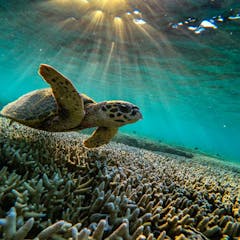
Articles sur Water
Affichage de 121 à 140 de 643 articles

An expert assesses the weak links in a warming UK.

Stemming the water crisis in the western US will require cities and rural areas to work together to make water use on farms – the largest source of demand – more efficient.

‘Green water’ is essential for healthy soils and a benign climate, but it’s under threat.

Belfast needs to rid its infrastructure of lead water pipes and raise public awareness of the serious health issues caused by excess levels of lead in the water.

Researchers have long argued that greywater could bolster South Africa’s food security if it’s used to water domestic food gardens.

Climate change has forced Australia’s grape growers to band together to secure water, as well as plant new varieties and cut water use.

The ocean is often considered a silent universe. But many recent studies highlight the importance of the soundscape for many marine species, both large and small.

Access to safe water means more than building treatment plants: A study sheds light on water consumption and perceptions of water in Indigenous communities in the Northwest Territories and Yukon.

We need a radical rethink of water resource planning. Strategies should include reusing water and moving water physically to water-scarce areas.

No, you’re not imagining it. You can pee more in winter. Mostly, there’s nothing to worry about. But it could be a sign of hypothermia.

A new study of dairying in Canterbury shows previous estimates vastly underestimate the impact of intensive farming. A 12-fold reduction in cow numbers could be needed to meet safe water standards.

La Niña is only part of the problem. The long-term driver of increasing drought – even in areas getting more rainfall overall – is the rapidly warming climate.

Climate change is affecting hydropower in different ways across the country.

The Colorado River provides water and electricity to 40 million people in the western US, but falling water levels threaten both of those resources.

Agreements negotiated a century ago to share water on Western rivers among states are showing their age in a time of water scarcity.

When Indigenous peoples lose their river flow to dams, satellite programs like Landsat – which is celebrating its 50th anniversary – can help them fight for their resources.

Many of Africa’s large aquatic animals, such as dolphins, manatees and turtles, are being killed for meat.

500 million people live in 19 African countries deemed “water insecure”.

South Africa’s dams are overflowing but the country is still facing water supply challenges.

Our planet’s invaluable natural store of freshwater is woefully neglected.
